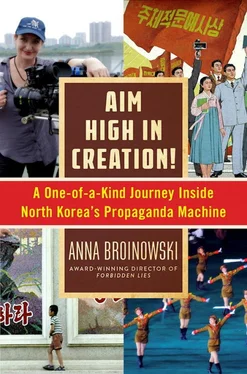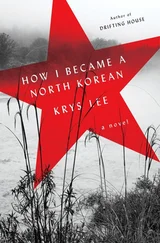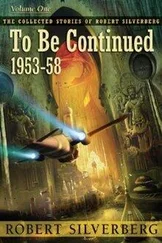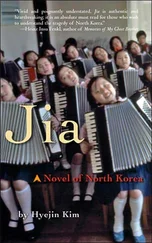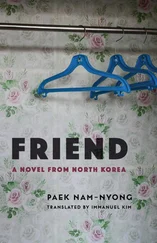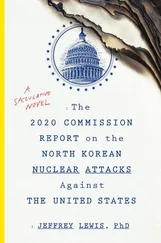Kim Jong Il’s genius shone brightest of all in the cinema. The North Korean documentary Kim Jong Il and Film Stars waxes lyrical about his exquisite sense of craft and his selfless devotion to his crews. Kim’s precocious talent revealed itself at age seven, when he spotted a continuity error in the 1949 war drama My Home Village , about Kim Il Sung’s life on Mount Paektu: the snowflakes on the soldiers’ coats were missing in the wide shots. The mortified director immediately reshot the scene. At twenty-six, while providing “on-the-spot creative guidance” to the 1968 military epic Sea of Blood , Kim Jong Il surveyed the burning huts, thousands of extras, nervous horses, and rapidly fading light, and proclaimed that the only way to get the battle shot on time would be to film it simultaneously, from three different cameras. He promptly went down in North Korean history as the man who invented the three-camera shoot—which is not a hard sell in a country without sitcom TV. So beloved was Kim by his filmmakers that when a set burnt down in 1983, the crew ran into the fire—not to save the stock or camera, but to rescue the Dear Leader’s portrait from the flames.
In March 2010, as I digested these dazzling claims in Sydney, Kim Jong Il was busy antagonising his enemies. North Korea had just sunk the South Korean Cheonan warship in a torpedo attack, killing forty-six sailors. Kim Jong Il stood at his gilt-edged podium in Pyongyang, looking out over hundreds of thousands of cheering soldiers, like Hitler in Leni Riefenstahl’s Triumph of the Will . The display of power was perfectly choreographed, right down to the red banners each soldier waved at exactly the same angle. I was struck by the man’s propagandistic brilliance. Rather than respond directly to the angry pronouncements of South Korea and its allies, Kim maintained a god-like silence, using deep-voiced generals to warn the world that any “reckless counter-measures” would be responded to with “an all-out war of justice.”
These scenes compounded my eerie sense of certainty that Kim Jong Il was my next subject. The switch from Norma Khouri to Kim made perfect sense: the filmmaker, hoax author, and propagandist are all professional deceivers, after all. Norma had used words to manipulate her readers, and Kim had used images to control his people. I had used thousands of invisible film tricks to create a real-life thriller about a brilliant liar—only to reveal a more complex “truth” about the Arab world. We were all propagandists; the only differences were our goals.
Norma admitted she’d “written the right book, the wrong way, for the right reasons,” but justified it on the grounds that if Bush could spin WMDs to invade Iraq, she could “spin Honour Crimes, to stop innocent women being killed.” Kim denounced the Hollywood movies he secretly adored, but coopted their techniques to create a manifesto that would smash capitalism, advance the socialist cause, and cement his grip on power. He had succeeded, judging from the mass rallies in Kim Il Sung Square. North Korea’s movie-going millions appeared galvanised into a state of permanent, reverential delusion. The Cinema and Directing was obviously cinematic kryptonite. Now all I had to do was unleash its power on the unsuspecting West.
I dived deeper into the book. The tension between Kim’s love of Western movies and his mission to destroy capitalism on screen was fascinating:
Today the Cinema has the task of contributing to the development of people to be true communists and to the revolutionization and working-classization of the whole of society. In order to carry out this historic task successfully, it is necessary, above all, to revolutionize direction, which holds the reins of filmmaking. To revolutionize direction means to completely eradicate capitalist elements… Just as victory in battle depends on the Commander, the fate of the film depends on the director’s art.
The idea of being a commander, unshackled by tycoon producers, was deliciously appealing. But Kim’s propaganda techniques, at first glance, were disappointingly mundane: a clumsy mix of Filmmaking 101, as in “makeup should be natural” and “performances must be believable,” and bizarre instructions to avoid using “decadent Western film equipment,” to “include revolutionary songs” and to make sure the “hand-props” of the capitalist villains were not desirable, so that the people remained loyal to the working-class hero.
I jumped on YouTube to watch the only two North Korean movies that were fully uploaded at the time, the 1968 melodrama Sea of Blood and the 1985 Godzilla rip-off, Pulgasari . And suddenly, my plan to make a Kim Jong Il–style film to stop a Sydney gas mine felt absurd. Both movies were funny—in a bad way. They looked like early Italian B films: lots of melodramatic acting, jerky camera moves, didactic dialogue, post-dubbed sound, dodgy special effects, and a focus on sentimentality over plot. The unifying elements were people randomly bursting into song, turgid speeches extolling the Dear Leader, and lots of wobbly crash zooms.
But there was also a beauty behind the dogma. The grainy celluloid gave them a nostalgic charm, and the sincerity of the acting was intriguing. Pulgasari , in particular, once you got past the eighties hair, was a hoot. Set in feudal Korea, it tells the story of a humble ironworker imprisoned by an evil lord, who is stealing the villagers’ tools to make weapons. Starving in his cell, the ironworker makes a little clay monster, imploring it to defend the village. His dying tears bring the monster to life. In kitsch animation sequences involving a rubber Godzilla suit and hand-painted models, Pulgasari becomes a giant fire-breathing dragon, leading the villagers in pyrotechnic battles against the evil lord’s army. Woven throughout is a sweetly comic love story between the ironworker’s tae kwon do–fighting son and the beautiful seamstress who helped Pulgasari to grow. By the end of the movie, the lord’s fort is a pile of ashes, and the lovers sail into the sunset, headed for their glorious, revolutionary future. Socialism has triumphed, and the money-grubbing enemy is defeated: the People, united, have won.
There was enough in Pulgasari to convince me that Kim’s films, while odd, had a unique kind of appeal. I scoured the web for North Korean operas and movie clips, wishing I could somehow watch them in full. I already knew a film made in Kim’s style would be jarring—but as I watched his rosy-cheeked peasant women harvesting corn, his handsome guerrillas lobbing grenades at US tanks, his heroic blacksmiths looking up from their anvils as yet another revolutionary song swelled forth, I realised that oddness was the point.
More than 1.8 million people watched Kim Jong Il parodies on YouTube. The Western media was hungry for stories about the hermit kingdom. If I could uncover the secret world of North Korean cinema, I could lure mainstream viewers to my film—and tell them the truth about CSG.
There was just one catch: I’d have to get into North Korea to do it.
THE GREAT NORTH KOREAN VISA CHASE
NEWS FLASH: YOU DON’T GET INSIDE the world’s most isolated nation by booking a plane on LastMinute.com. You get in as a tourist, by paying a lot of money to a tour company approved by the regime, agreeing to a strictly controlled itinerary, and taking in nothing more than a stills camera.
But I didn’t want to go in as a tourist. I wanted to go as a filmmaker, with a professional camera and lights, and sit down with North Korea’s top filmmakers. I wanted to ask them whether Kim Jong Il really was a genius, and how to use his techniques to make a film potent enough to stop a mine. If I played my cards right, I might even meet the Dear Leader himself. We’d wander through his movie vault together, discussing Elizabeth Taylor’s early work. We’d crack open his Hennessy and chat into the night about why globalisation was destroying the planet. I’d show him my footage of the Pilliga gas wells and he’d be so shocked, he’d bankroll my film himself. I could see us now, storyboarding the script, arguing about the act three crisis. I would be Martin Bashir to Kim’s Lady Di: flattered I wanted to pay homage to him in the same way that Brian De Palma had homaged Hitchcock, and Quentin Tarantino had homaged John Woo, the Dear Leader would tell me everything.
Читать дальше
